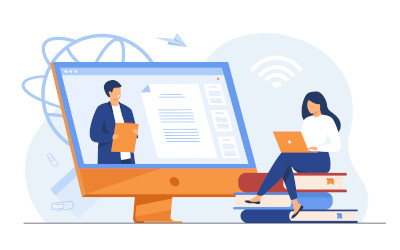BNFE LMS | ADB
Objective and Purpose of the Assignment
ADB has supported the government's plans and initiatives for all, eradication of illiteracy, quality education, and gender parity. The Third Primary Education Development Program (PEDP3), 2011-2018, has contributed to the quality improvement, institutional and systematic reforms in the primary education sector. Enrolment rates in the country have significantly improved in recent years, and there are as many girls enrolled in elementary school as there are boys. Despite their achievements, many students continue to drop out of school. The Fourth Primary Education Development Program (PEDP4) started in 2018 and provides quality education to all children of Bangladesh from pre-primary up to Grade 5 through an efficient, inclusive, and equitable education system. Technical assistance (TA) has been undertaken to support the transition from PEDP3 to PEDP4. The TA supported implementation in key results areas and reported disbursement-linked indicators under the Third Primary Education Development Project (PEDP3, FY2012–FY2018). It is also supporting the government's implementation of the Fourth Primary Education Development Program (PEDP4, FY2019 –FY2023) through results-based lending (RBL). This technical assistance (TA) will support a study on gender disparity in drop out and out of school children (OOSC) in primary education. To study the effectiveness of utilizing e-learning to improve gender disparity in dropouts and OOSC, e-Contents needs to be developed under the guidance of the Bureau of Non-Formal Education and National Curriculum and Textbook Board, Bangladesh.
The assignment's main objective is to develop e-learning material with self-contained e-materials for self-learning through tablet-based learning devices. This includes designing and developing e-learning materials, installing e-learning materials in tablets, providing counselling services to facilitate the self-learning of dropouts and OOSC ages 8–14 in primary education.
Scope of Work
The main scope of work is to develop e-learning (online and offline) platform for Non-Formal education in Bangladesh, prepare multimedia contents (i.e. audio-visual lectures, software-based, animation, graphics, etc) for Prevocational Level-1 on basic disciplines, e.g. Fundamental Bangla and Mathematics, install digital materials to tablets and provide additional support for improved understanding of classes. A consultation workshop with local teachers, students, education experts, curriculum experts, policymakers, and other relevant stakeholders may be conducted on the e-learning and multimedia lessons, with the guidance of the Bureau of Non-Formal Education. The workshop's outcome will help design and develop digital content and the content of mentoring services for selected children at risk of dropouts and OOSC.
How LMS Works

The Learning Management system is an integral part of the proposed project that will keep track of the broad audience and deliver a trace a deal of students’ interaction with course materials. All the provided devices/tabs will be fed with 240 video contents for Bangla, Mathematics, Use of Common Tools, and Manners & Behaviors. The system offers offline video content watching facilities and take participation for exams/test session. User/Learners activities will be synchronized automatically to the dashboard when users/learners are online.
Each subject has at least five levels, which consist of video contents and practice sessions. After thoroughly watching video content and passing small-test courses along with successful completion of each or skip, learners can learn from any level.
LMS DASHBOARD
LMS dashboard is acting as the visual presentation of the Performance Indicators related to the learners’ activities at a glance. Panels can be used to monitor real-time course progress, spot trends, and identify trouble spots. This means you can know precisely how to get the most out of your training initiatives. The dashboard will show how many users/learners are currently being registered, how may devices/tables be distributed, total contents fed into devices, and exams/tests been set for learners. Besides, it will also display list of registered learners with their necessary details (e.g. gender, age, mobile number, location, and last time their data to be synchronized).

